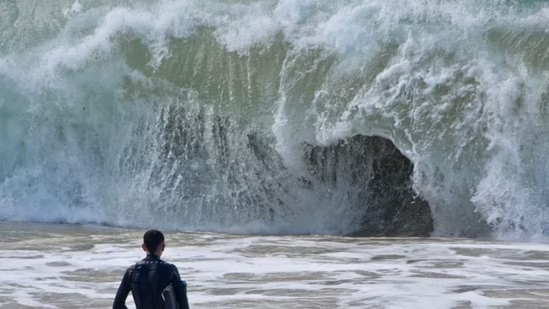Cascadia mega-tsunami threat: Millions at risk along US Pacific Coast — all to know

Flash floods in Tennessee leave three dead, one missing as rescuers battle historic rainfall in Chattanooga and surrounding areas.
A new scientific study has raised alarm over the potential for a catastrophic mega-tsunami that could devastate parts of the U.S. Pacific Coast if a massive earthquake strikes the Cascadia Subduction Zone (CSZ).
Stretching nearly 600 miles from Northern California to Vancouver Island, the CSZ is a volatile fault line where the Juan de Fuca Plate is steadily sliding beneath the North American Plate. Researchers from Virginia Tech, led by geoscientist Tina Dura, estimate there is a 15% chance of a magnitude 8.0 or greater quake within the next 50 years. Such an event could unleash towering waves capable of swallowing coastal cities within minutes.
High-Risk Zones Identified
Washington, Oregon, and Northern California are considered the most vulnerable, though tsunami impacts could also extend to Alaska and Hawaii. According to the research team, coastal communities face the threat of rapid flooding, massive land subsidence, and shoreline shifts that would instantly alter floodplains.
The CSZ last produced a major earthquake in 1700, triggering a tsunami so powerful it was recorded in Japan. Experts warn that if history repeats itself today, the consequences would be far worse given the region’s dense population, urban infrastructure, and reliance on coastal transport networks.
Potential Scale of Destruction
The study’s computer simulations suggest that waves from such a mega-tsunami could reach up to 1,000 feet in height, with sea levels dropping by more than six feet before impact. In worst-case scenarios, cities like Seattle, Portland, and communities along Northern California’s coastline could be inundated within minutes.
Researchers estimate that more than 30,000 lives could be lost, over 170,000 buildings destroyed, and economic damages could exceed $81 billion.
Urgent Need for Evacuation Plans
The findings also indicate that current hazard maps may underestimate the true extent of the danger. As a result, experts are calling for immediate updates to evacuation strategies, early-warning systems, and resilient infrastructure to reduce the human and economic toll.
Lead researcher Tina Dura emphasized that recovery from such an event would be lengthy and complex:
“The expansion of coastal floodplains following a Cascadia earthquake has not been fully quantified. The potential changes to land use could dramatically extend the path to recovery.”
Preparedness is Key
While the timeline for the next mega-quake remains uncertain, scientists agree that proactive disaster readiness is the only safeguard against widespread loss of life and property.


